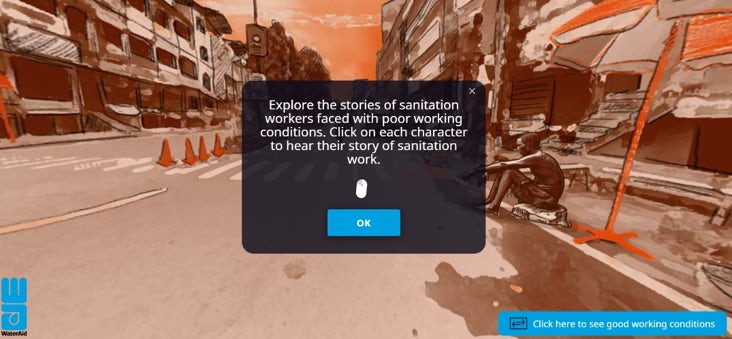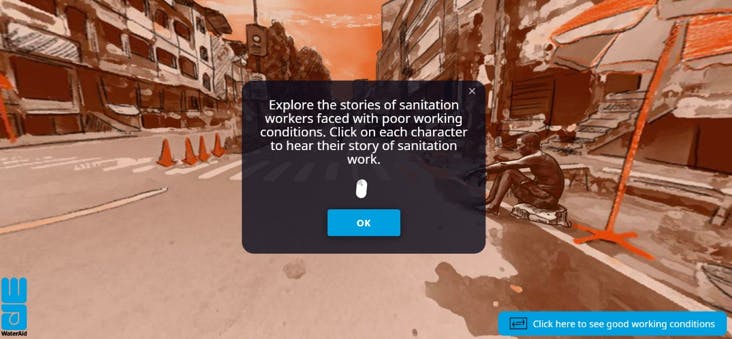For those responsible for marketing physical spaces and events, lockdown has been a tough gig. It’s one thing to use digital content and experiences to acquire customers, build brand loyalty or enhance the physical interaction; it’s a different ball game when the ‘main event’ sitting at the centre of the customer engagement is no longer possible, leaving marketers with the responsibility of creating a digital version of the experience.
I’ve watched with interest and observed that often in trying too literally to imitate the real thing via digital, an experience invites direct comparison and inevitably falls flat. During the last few months I’ve seen a lot of galleries and museums creating or dusting off existing 360 tours in an attempt to overcome the lockdown challenge. It’s a logical thought of course, if someone can’t attend a physical place why not replicate ‘walking around’ the physical experience for them in a digital format.
Creating an alternative experience
The National Gallery is just one example of a business that has tried to bring the physical experience to audiences whilst doors have been shut.
Whilst it’s technically feasible, the effectiveness is all about context. In normal circumstances virtual tours of the gallery are pretty cool: inspiring visitors or helping them plan their day. But during lockdown, tours like this feel sanitised and emotionless. They serve as reminders of what visitors could have seen and press the bruise of not being able to visit, rather than being valuable experiences in their own right. And despite what the taglines often promise, they are certainly not the next best thing to being there.
A better way to approach this could have been through creating an alternative experience altogether that allowed consumers to learn more about the stories behind the paintings, even allowing them to step inside some of the most iconic pieces, to explore them in a completely new way. It wouldn’t invite comparison and yet still provides a way to connect, leaving consumers feeling positive. This is what we at Holoscribe tried to achieve with WaterAid’s approach to ‘Look Deeper’ – their digital version of a physical gallery exhibition. The immersive experience, created using ‘out of the box tools’, feels like a digital work of art in its own right and gave consumers a memorable experience.

IKEA meatballs
Another option for marketers trying to bridge the physical experience gap is using digital content as a facilitator, enabling a consumer to create their own physical or emotional experience. Ikea’s decision to share its famous Swedish meatballs recipe in the style of its flatpack furniture manual is a great example of how this can be done. Instead of doing a big push around the Ikea Place AR app, which would have been an obvious response to the growing DIY and home improvements’ habits during lockdown, the brand tapped into what actually makes a trip to an Ikea store for consumers; the Swedish meatballs.
It’s a fun and relevant way for the furniture brand to use digital as a route to connect in a valuable way with audiences. It showed Ikea customers’ they were understood and brought part of the physical brand experience into the home whilst they couldn’t go in store.
Missing your IKEA meatball fix? We’ve created a recipe for you to recreate this delicious dish in the comfort of your own home #IKEAmeatballs pic.twitter.com/d89lRsJxH7
— IKEA UK (@IKEAUK) April 20, 2020
Secret Cinema’s Secret Sofa
Secret Cinema is another brand that has tapped into this successfully. Rather than opting to directly replicate the physical Secret Cinema experience with 360 technology, they have given fans the tools to create their own experiences from home.
Each week, Secret Sofa shares details of all the elements people will need to create their own experience without having to leave the house. From costume recommendations, music choices to fit the era, activities, food and drinks, the brand is arming its loyal following with the elements that make Secret Cinema. It’s a smart way to bring the brand into people’s homes, using digital in a way that empowers consumers to create their own memorable experiences.
And so, we say farewell to virtually the best film club in the world. Thank you all who joined Secret Sofa presented by @haagendazsuk for the past eight weeks. You made this lockdown a whole lot more magical createing Secret Worlds we will never forget… With love, the SC Team pic.twitter.com/nV7mmT50mN
— Secret Cinema (@secretcinema) June 9, 2020
As we look towards the future, marketers are undoubtedly set to approach strategies through a lockdown lens. The focus will be on planning content that will both compliment the physical experience if it’s happening, whilst also bring value in its own right if a lockdown – or something similar – is imposed again.
Creating digital experiences that aren’t bitter sweet
The energy of the crowd at a football match, the feeling of a bass drum reverberating through your chest at a rock concert, the look on your child’s face as they see the castle at Disney Land, the feeling in your stomach as you ride a roller-coaster – aside from retail, it’s unrealistic to expect that we’ll reach a point where digital experiences will entirely replace or surpass shared physical experiences (until we see mass adoption of in-home VR at least), and who would want them to?
For venues and events, there’s a delicate balance between digital experiences that bring value, and experiences that act as a stark reminder of what’s not possible and fall flat. I’m curious to see where Wireless Festival’s VR event lands on this scale. I hope to see them create some access all areas backstage content that audiences could never have seen, even if the event had of been running, to remove the audience’s tendency to directly compare. We shall wait and see.
My simple advice when approaching lockdown proof content planning would be this – don’t restrict your thinking with something that tries to replicate and be the next best thing, look for alternatives that bring value in different ways, in order to build the deeper and memorable experiences that consumers value.
More on experiential marketing
Experiential Marketing Best Practice Guide
Four of the best conceptual experiential marketing examples from 2019
The post Virtual events – How do you replace the real thing without it being bitter sweet? appeared first on Econsultancy.
Read more: econsultancy.com
